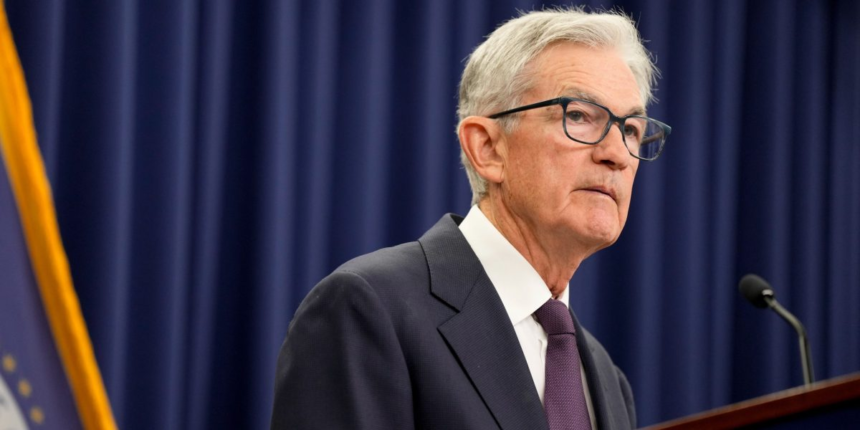The “low-hire, low-fire” US labor market is leaving millions on the outside looking in.
Economists forecast that September’s employment report, expected to publish on Friday, will show another month of anemic payrolls growth. They see the jobless rate remaining at 4.3%, a level that is still relatively low but masks the reality of a growing number of people who feel stuck in jobs they don’t want or underemployed.
The decline, a sign that more people are staying in their current roles longer and locking out newcomers, is broad-based across states and industries, Goldman Sachs found, but particularly sharp in four sectors: construction, leisure and hospitality, retail trade and professional services.
Alex English experienced the lack of churn first-hand when he lost his six-figure marketing job at a luxury goods importer in California more than a year ago. The 38-year-old moved back to his hometown of Tampa, Florida, hoping his connections there would help him job hunt.
After months of working the phones, networking at local events and applying for around 50 jobs, nothing’s “popped,” he said.
English recently took a job as a retail “budtender,” advising patients about medical marijuana and dispensing it. He’s been strung along for so many marketing jobs that he’s now wondering if his future’s in cannabis. “Maybe this is just an opportunity that I have to accept,” English said.
“It seems as if employers are just not sure what’s going to happen with the economy,” he said. “People I know who have jobs are clinging to their jobs and also a little fearful.”
A measure of underemployment that includes the unemployed, people who’ve only found part-time jobs and so-called discouraged workers who’ve largely given up their job search has climbed in recent months to the highest in almost four years.
Among them is Renee Nagy, who moved to New York from Georgia a year ago seeking better work opportunities and hasn’t yet landed a full-time job.
For now, the 37-year-old, who holds a business management degree and owned a catering firm back in Savannah, is waiting tables at a sports bar near Madison Square Garden for three shifts and hoping to get a bartender position.
Young Americans face one of the toughest job markets in nearly a decade. The unemployment rate among workers ages 16 to 24 jumped to 10.5% in August, the highest since 2016 when excluding the Covid era.
Keya Nandi, 22, has applied for around 350 jobs, made countless networking calls and sat through scores of coffee chats over the past year. She’s been unable to find full-time employment, even though she graduated from the University of Cincinnati in May with honors, and her resume includes an internship at PwC and a fellowship in Germany.
“Despite of all of these laurels and everything, I was still struggling at the end of the day,” said Nandi, who holds a bachelor’s in economics and business analytics. “Sometimes it can be very disheartening because you start to devalue almost everything else you’ve done.”
The US lost 42,000 factory jobs in four months, the longest stretch of declines since 2020. Many firms aren’t replacing workers who quit or retire because they’re paralyzed by the uncertainty around President Donald Trump’s trade policies, said Michael Hicks, an economics professor at Ball State University in Indiana and director of its Center for Business and Economic Research.
AlphaUSA, an automotive-parts maker in Michigan, pays about $250,000 a month in additional costs from tariffs on imported fasteners. The extra expense is a “threat to our existence,” said Charles Dardas, president and chief operating officer, whose business employs about 200 people.
Dardas is reluctant to reduce the firm’s workforce because of how hard it is to find employees for key roles, but he says he’s also wary about committing to hiring.
“It’s quite a conundrum for us and for many others,” Dardas said.
Monique Hardin-Cordero, a 61-year-old New Yorker with a master’s degree in public administration from Columbia University and decades of director-level roles, says she is “definitely too young to retire.”
Yet she finds herself trimming years off her resume, worried that would-be employers might be put off by her age.
Hardin-Cordero left her last position with the National Kidney Foundation last year to care for her ailing mom and never figured it would be so hard to find another one.
Unemployment is lower for seniors than the national average, but older workers fare significantly worse when looking at a broader gauge that includes those marginally attached to the labor force and those who haven’t looked in the past year and may call themselves retired, although involuntarily so, according to research by the Schwartz Center for Economic Policy Analysis at The New School in New York.
As she hunts for full-time work, Hardin-Cordero is pitching in at the NYC Department for the Aging, an agency that helps seniors get trained and find work, among other services.
“I wouldn’t have anticipated myself being in this position now where I feel like I am — I don’t wanna use the word begging — but I’m like working a lot,” Hardin-Cordero said. “Harder than I thought I would have to secure a position on a senior level.”









